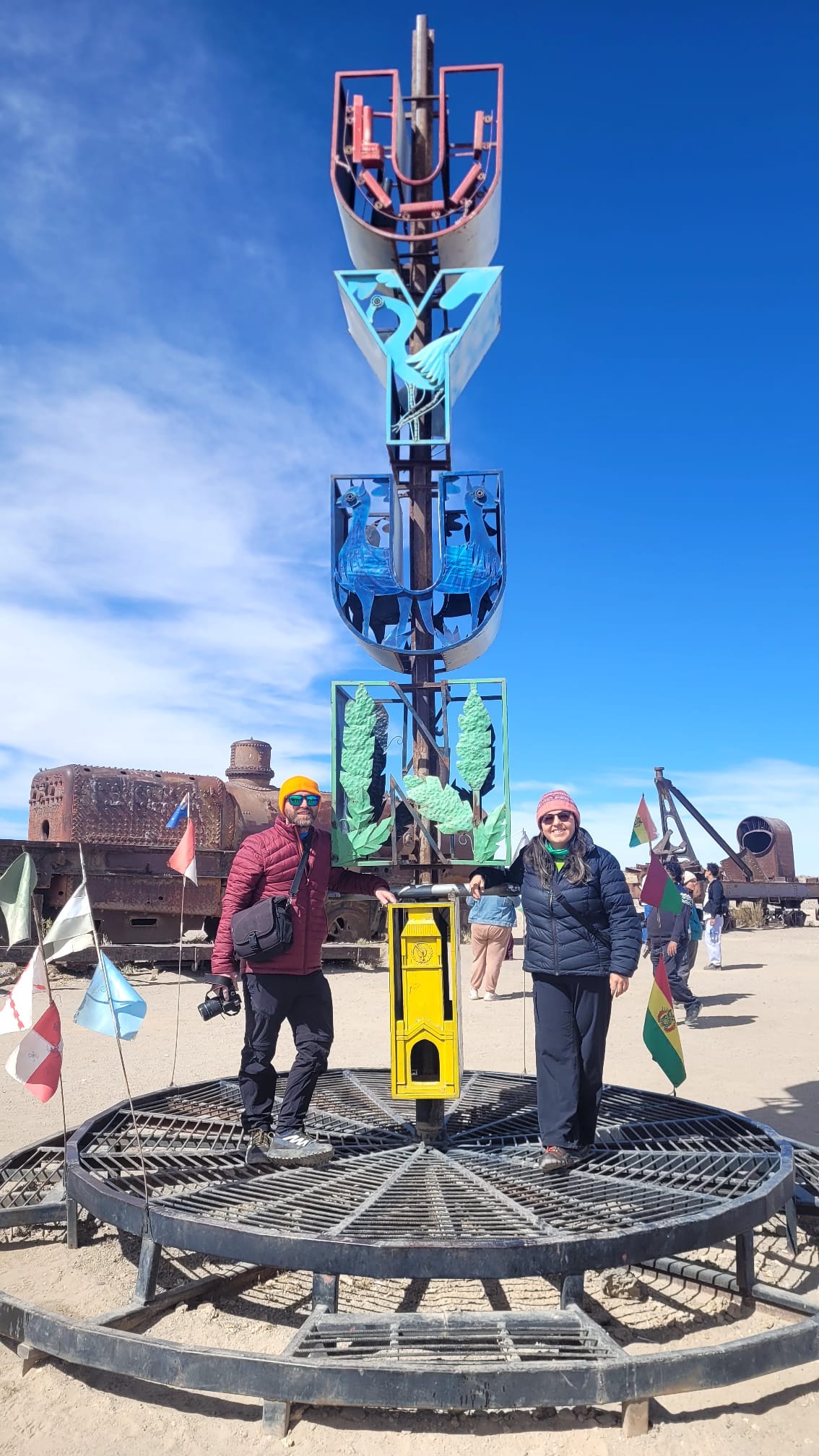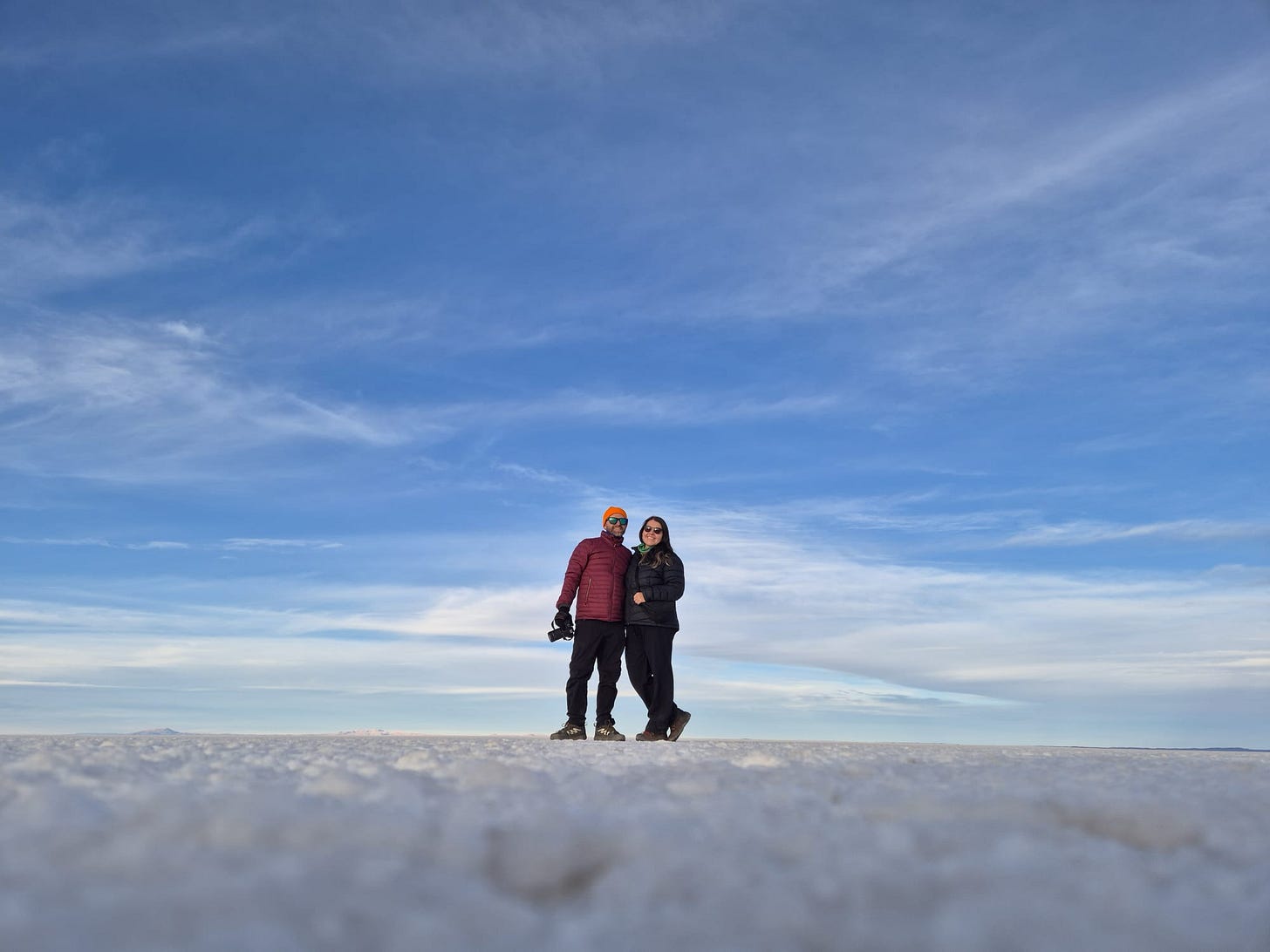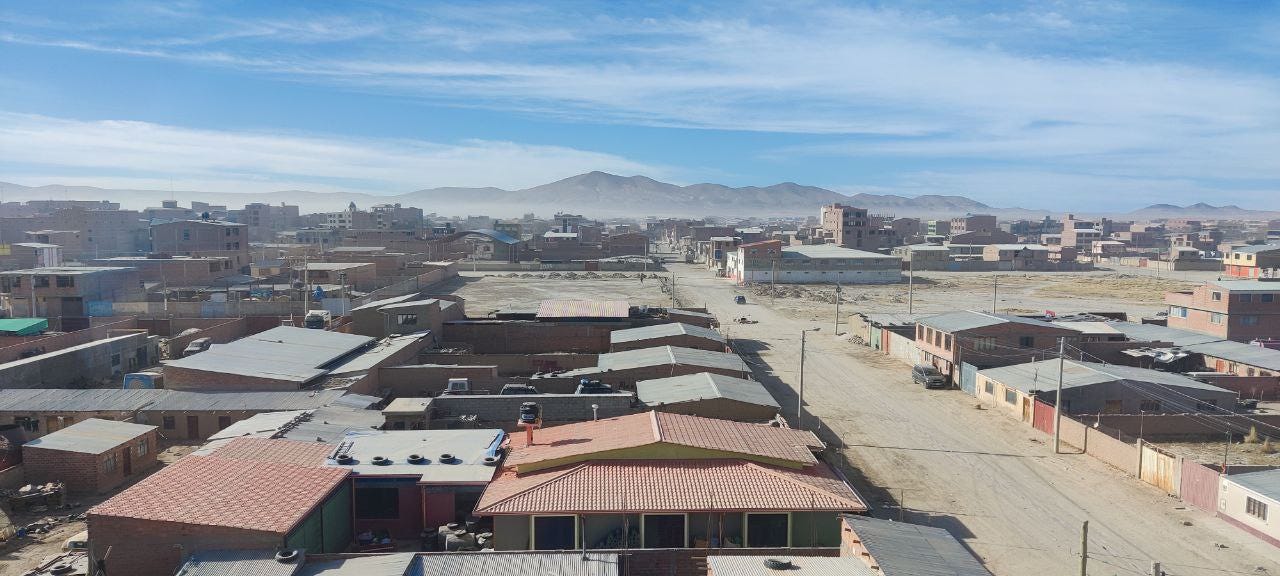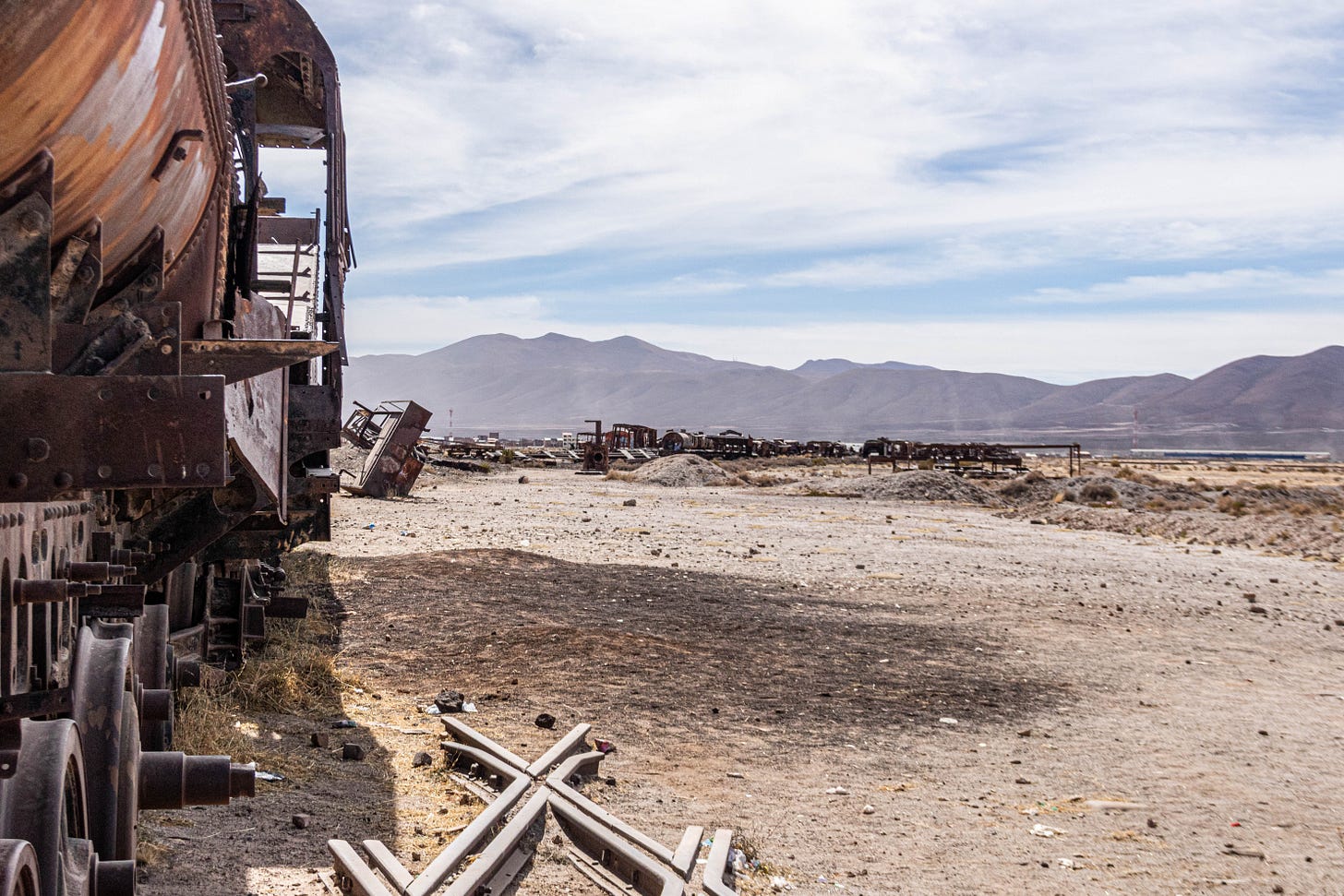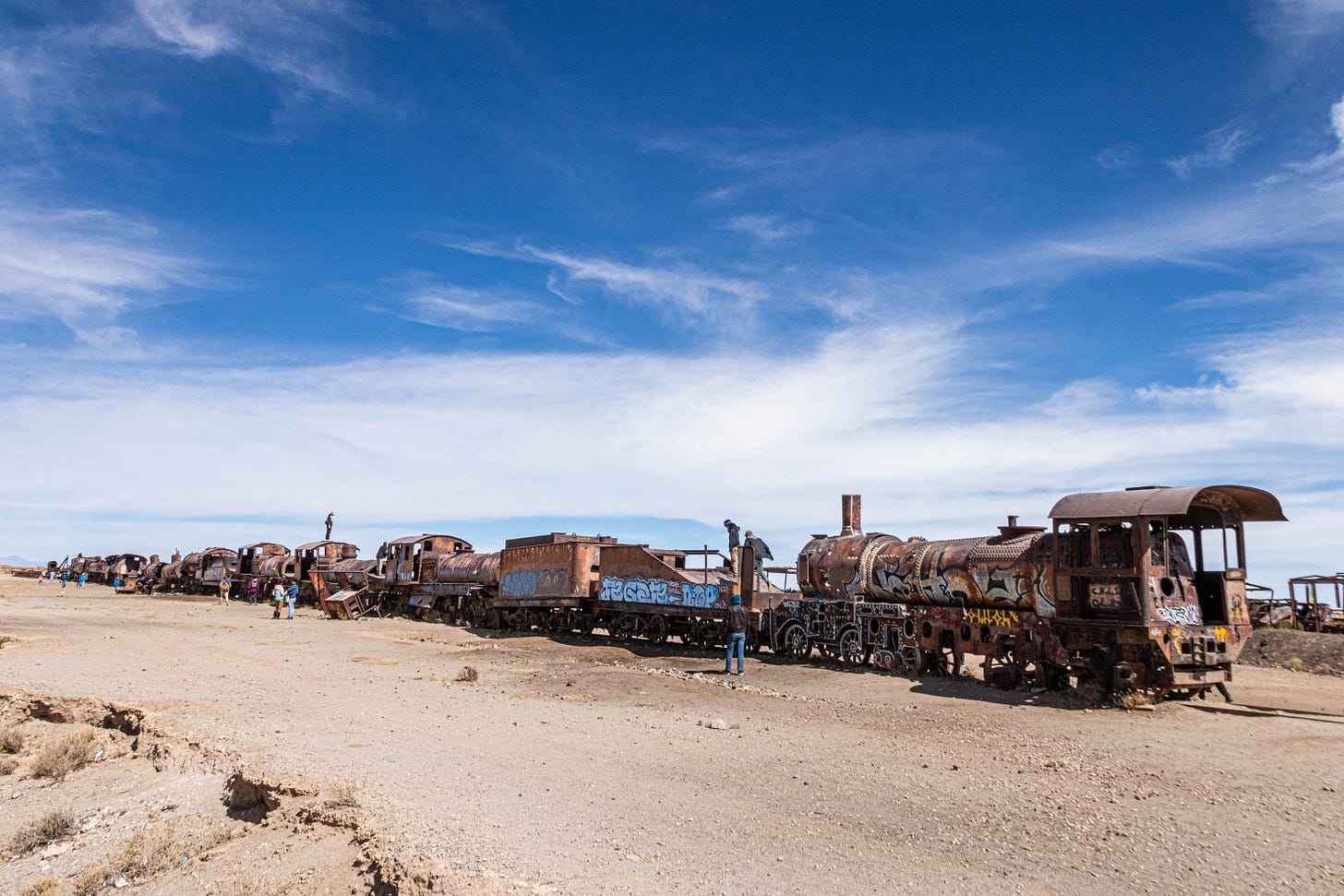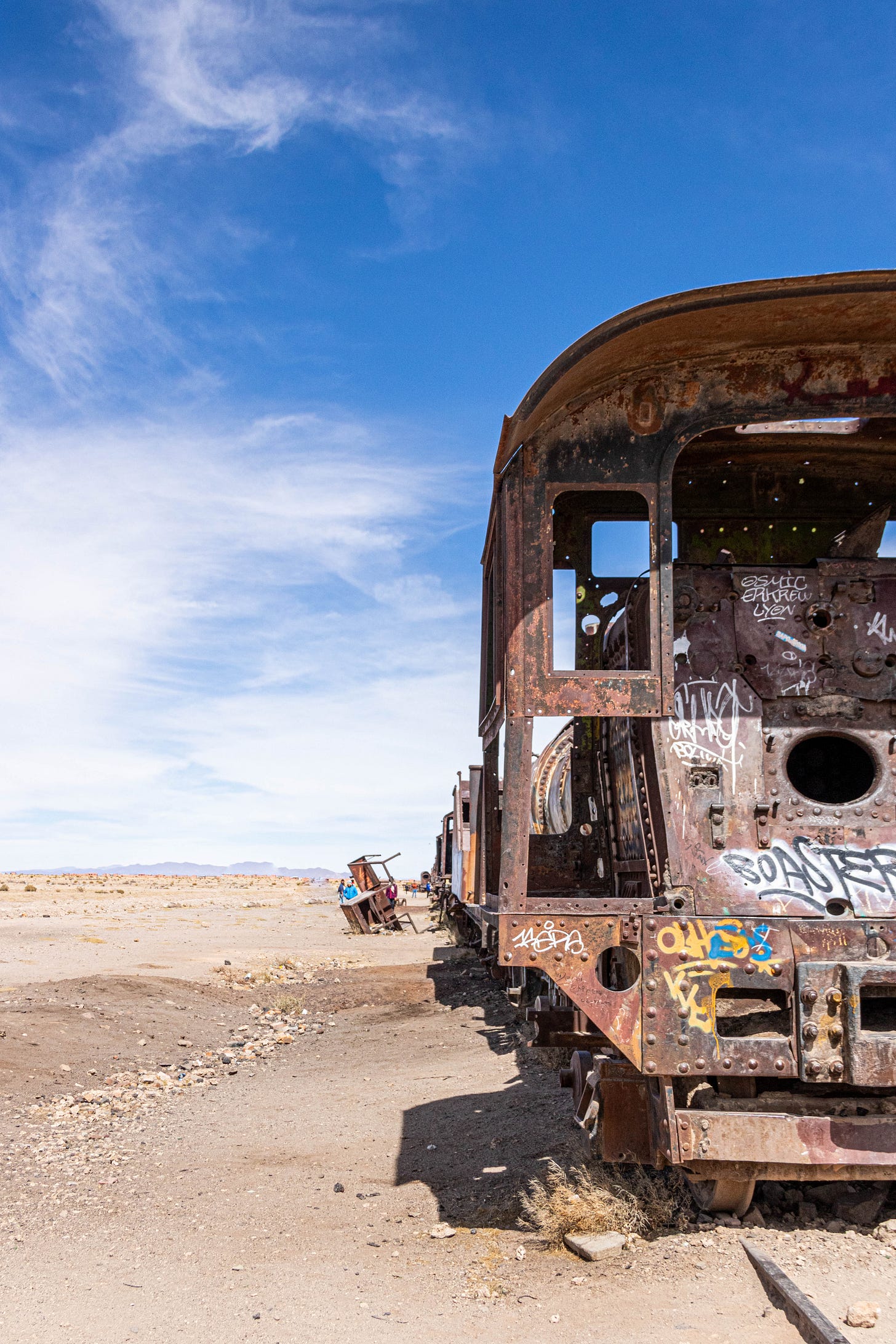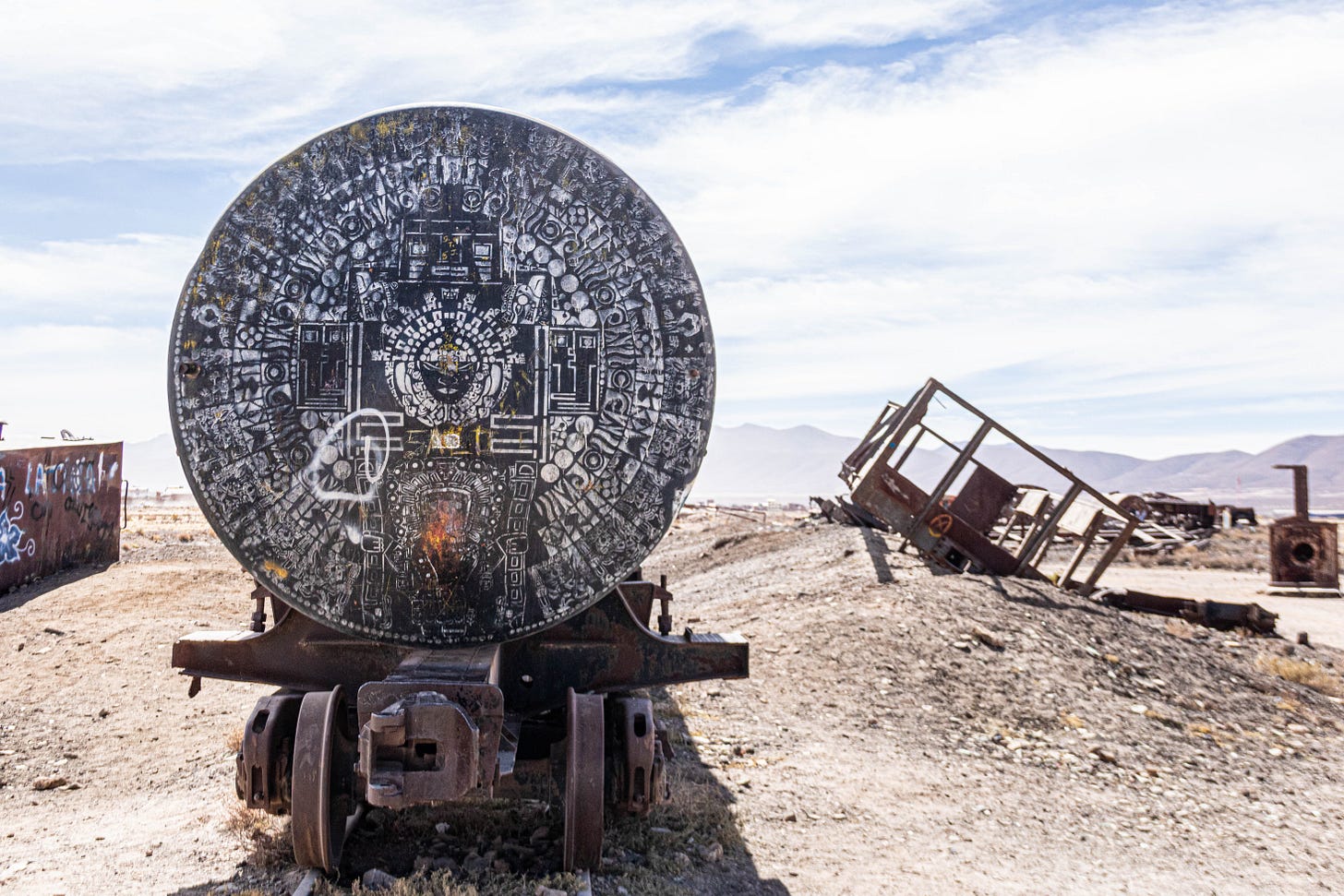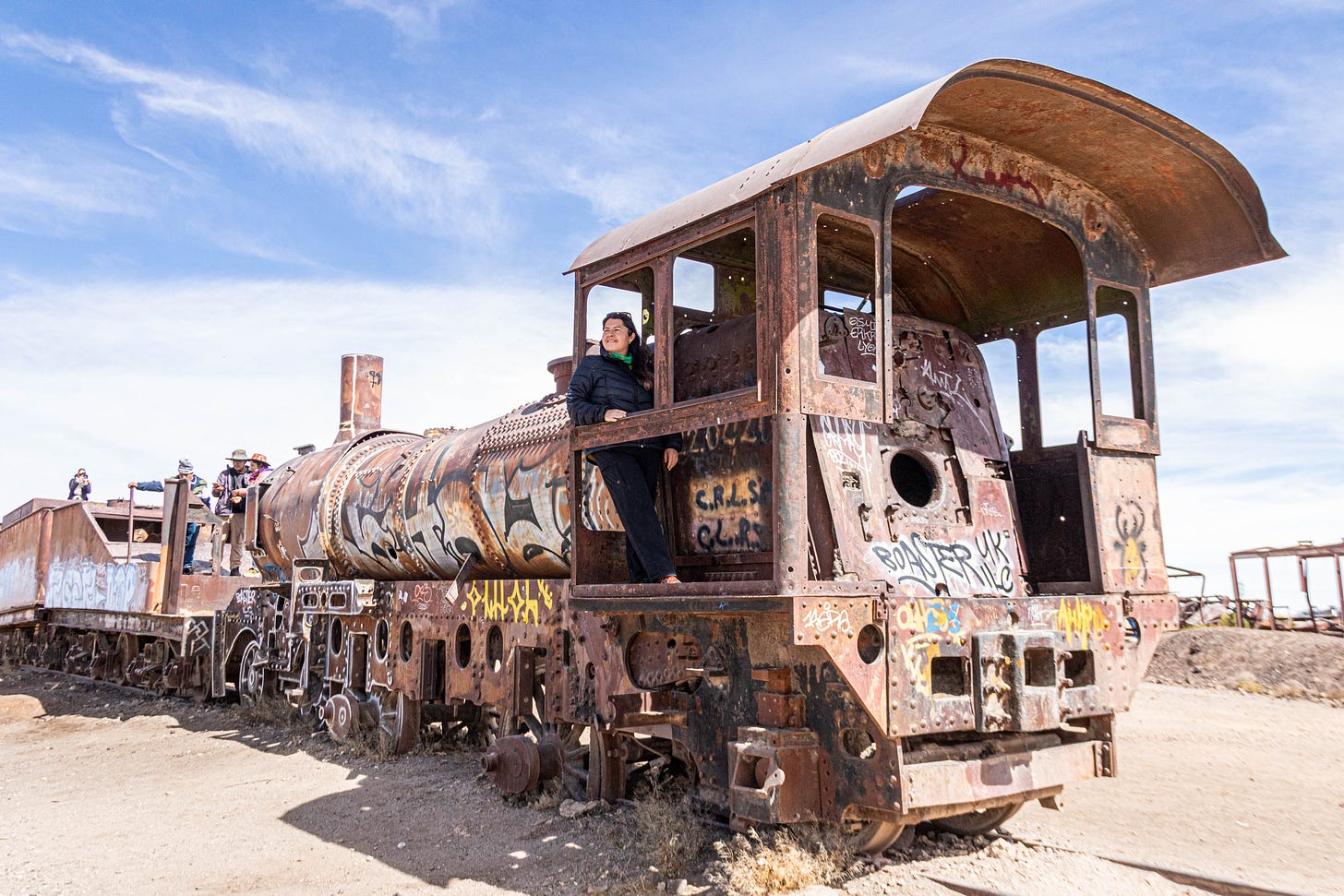Something important happened in Uyuni
Uyuni salt flat is magical and this helped me to ask a question.
In La Paz, Fernanda and I booked a 3-day tour to Uyuni to visit the salt flat, and the area around it. To reach the city of Uyuni we did a night bus ride, on a super comfortable bus (bus cama). When we arrived at 6 am it was -8°C (18°F), and we had to wait for a ride to a coffee place because our tour would have started only at 10 am, but nobody appeared. As compensation for this inconvenience, the agency gave us a room in a hotel with breakfast where we had time to rest until the tour started.
The Uyuni salt flat has been on our list for a long time, as a photographer it is a magical place, a unique destination. Fernanda had already been to Bolivia but didn’t manage to visit it, so it was also an important destination for her. I thought of using this symbolic place to ask her an important question.
Uyuni is a small town in southwestern Bolivia that serves as the gateway to one of the most extraordinary natural wonders on Earth: the Salar de Uyuni, the world's largest salt flat. This vast, otherworldly expanse of white salt crusts and mirror-like reflections covers 10,000 square kilometres (approximately 4,000 square miles).
At 10 am, a 4x4 vehicle came to pick us up at the hotel and our tour started. In the car we met a family from Brazil and a solo traveller from the same country, and we shared our trip with them.
Our first stop, just outside the small town of Uyuni, was the Train Cemetery. This open-air graveyard of rusting locomotives and railcars is a stark reminder of a bygone era.
The origins of the Train Cemetery date back to the late 19th and early 20th centuries, a time when Bolivia's mining industry was thriving. Uyuni, strategically located at the edge of the salt flats, became a crucial hub in the country's railway network. The railways were initially built to transport minerals like silver, tin, and copper from the rich mines in the Andes to ports on the Pacific coast for export.
However, the fortunes of Uyuni and its railway network began to decline in the mid-20th century. The depletion of mineral resources, coupled with the rise of more modern transportation methods, led to the gradual abandonment of the railway lines. By the 1940s, many of the trains were decommissioned and left to rust in the desert.
Keep reading with a 7-day free trial
Subscribe to I only take pics to keep reading this post and get 7 days of free access to the full post archives.


